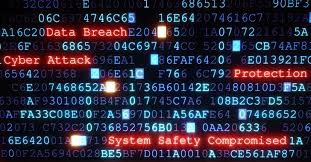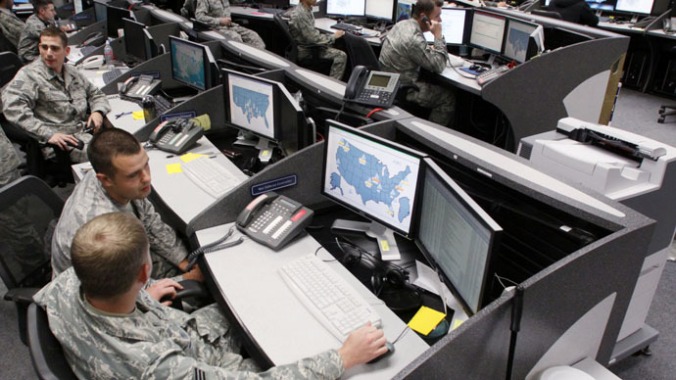With the recent attack on Dropbox, PlayStation Network and a bunch of high-profile websites, computer hackers are back in the limelight again. Hackers and hacker groups were quite famous in the 80’s and 90’s but their popularity started fading since the Y2K days. Today, we are once again witnessing hackers threatening to take on giant corporations sending chills down everyone’s spine. According to Abhishek, a regular TechSource contributor and a long-time FOSS advocate, hacker groups are on the rise and bring with them devastating effects. W have already featured here some of the most infamous black hat hackers of all time. This time, we will take a quick look at some of the most notorious computer hacker groups that ever existed:

Masters of Deception
This New York-based group was responsible for notorious acts such as downloading confidential credit card histories of stars like Julia Roberts, breaking into AT&T’s computer system and stealing credit card numbers. Founded by hackers Acid Phreak, Scorpion and HAC, Masters of Deception or MOD, was a mockery of LOD (Legion of Doom), its archrival and a hugely popular hacker group at that time. MOD claimed that Legion of Doom had lost its direction, which also resulted in the famous hacker Mark Abene (a.k.a Phiber Optik), a former LOD member, jumping ship and joining Masters of Deception. The group operated during an era where C64s and TRS-80s where the hottest gadgets around, that is the late 80s. MOD’s days of glory however, ended when FBI and Secret Service forces arrested their members and put them behind bars.
Legion of Doom
MOD’s biggest enemy Legion of Doom was a famous hacker group founded by a hacker called Lex Luthor (real name: Vincent Louis Gelormine). Apart from hacking, LOD was renowned for publishing Legion of Doom Technical Journals consisting of hacking knowledge and information. In 1990-91, this Texas-based group went on war with MOD resulting in a conflict so famous and epic that it is known as The Great Hacker War. The war consisted of both sides attacking each other across the Internet, X.25 and telephone networks. Such was the rivalry that LOD launched a security firm to assist corporations that were victims of attacks by Masters of Deception’s hacks. As for the great hacker war, Masters of Deception emerged victorious in the end.
Chaos Computer Club
CCC is a hacker organisation based in Germany and other German-speaking countries. CCC has been active since 1981 and it describes itself as — “ a galactic community of life forms, independent of age, sex, race or societal orientation, which strives across borders for freedom of information.” Contrary to what its name suggests, the aim of this group is not to create chaos but to bring more transparency in governments and promote freedom of information, and human right to communication. CCC was founded in Berlin in 1981 and it has since then gained itself a lot of popularity. Its most prominent activities include hacking into U.S government computers and selling their operating system source code to Soviet KGB. Its most famous attack however, is Project Blinkenlights wherein a building in Berlin was changed to a giant monochrome computer screen. The attack was to celebrate the group’s 20th anniversary and similar attacks have been carried out in France and Canada. In 2008, the group came into limelight again when it acquired German interior minister’s fingerprints and posted them online. The group regularly publishes a quarterly magazine and hosts a two-hour radio show that is aired on a local radio station.
Milw0rm
This hacktivist group’s shot to fame was perhaps the most debated moment ever in hacking history. In 1998, Milw0rm hacked into Bhabha Atomic Research Center (BARC), the main nuclear research facility in India. They managed to obtain email and data on recent tests, and destroyed all data in 2 out of 8 servers. Milw0rm, a group of teenage hackers had managed to download about 5 Megabytes (this was 1998) of information from BARC. The attack was part of their anti-nuclear agenda, which warned the world that placing nuclear power in the hands of India and Pakistan could result in World War 3. This attack received a lot of international coverage with debates being broadcast questioning the morality of the attacks. The fascinating part of the attack was that it was carried out by a bunch of teenagers with the youngest member being merely 15 years old. After BARC, the group managed to carry out further high-profile attacks on sites of World Cup, Wimbledon, Ritz Hotel, Drew Barrymore and the Saudi Royal family.
Red Hacker Alliance
This is the largest group of hackers in the world boasting about 80,000 members. Red Hacker Alliance was started in 1998 by a group of patriotic youth opposed to the ethnic riots in Jakarta, Indonesia. They operated under the alias China Redhackers thus giving birth to a new type of hackers called red hackers. The group, mainly consisting of Chinese hackers, is responsible for carrying out attacks against CNN.com in 2008. The group has a huge following and reach with more than 250 websites linked to Red Hacker Alliance. Also, a prominent hacking group called Honker Union has recently merged with Red Hacker Alliance making the group even stronger.
Anonymous
Anonymous is not technically a hacker group but is in fact an Internet meme that originated on 4chan boards. Perhaps, the most feared group of hackers today, Anonymous has gained notoriety for hacking into Sony’s PlayStation network. The attack on Sony, called #opsony was a part of Operation Payback which was a coordinated attack on opponents of Internet piracy. The motive behind this attack was to protest the lawsuit filed against a hacker named Geohot who hacked or rather unlocked the PS3 system and posted the process on YouTube. Sony, apart from filing the lawsuit, also demanded YouTube to hand over the IP addresses of all the people who watched Geohot’s videos or visited his social links. This infuriated not only hackers but also many Internet users who deemed it as a violation of privacy. As for the damages of the attack, Sony is still busy licking its wounds. Operation Payback on the other hand, was in retaliation to the Decentralized Denial of Service (DDoS) attacks on torrent sites carried out by anti-piracy organizations. The massive attack also consisted taking down websites of banks that had cut ties with Wikileaks. Apart from Operation Payback, a lot of attacks have been carried out under the moniker Anonymous. The more famous ones include the attacks on the Church of Scientology websites, HB Gary Federal and Westbro Baptist Church. The group’s protest against the Church of Scientology, called Project Chanology received a lot of media attention. The unrest began when the Church of Scientology decided to take down a video by Project Chanology citing copyright infringement. This led to massive protests outside Scientology that centers along with the hacking of their websites. As of now, the Anonymous group is going strong and big media companies are on the edge of their seats wondering who’s next.

LulzSec
Lulz security, more commonly known as LulzSec is a hacker group responsible for carrying out several high-profile attacks recently. The group, consisting of six members, was formed on 15th May 2011 with a motivation of having fun by causing mayhem. The word Lulz is a neologism derived from the Internet slang LOL, which stands for laugh out loud. LulzSec’s first attack was on Fox.com’s website which included altering several employees’ LinkedIn profiles, leaking passwords and contact information of 73, 000 X factor contestants. The major attack however, came when they infiltrated PBS’s website. PBS had earlier aired a documentary about Wikileaks and Bradley Manning. LulzSec hacked PBS’s web page and changed the main story to Tupac being alive in New Zealand. They also attacked Sony and Nintendo’s websites. In the Nintendo attack however, no user data was affected. The group is also responsible for routing telephone numbers to various support lines like World of Warcraft support and FBI Detroit Office. On 20th June, LulzSec announced that it had teamed up with Anonymous group and launched a new operation called Operation Anti-Security. The operation consisted of hacking into, stealing and publishing classified government information from sources like government websites and banks. The operation was declared successful when the group took down the Chinese and Brazilian government’s websites using DDoS attacks. LulzSec’s other prominent attacks include the ones on sites of Bethesda Game Studios, Minecraft, League of Legends and The Escapist (online magazine). The group finally broke up on June 26, 2011 and released a final ‘50 days of Lulz’ statement.








